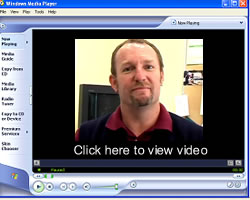About this subject
Welcome
This subject is the introductory subject to Emergency Management and as such introduces you to the principles and concepts of emergency management at a fairly basic level. All the principles and concepts covered in this subject will be further developed in future subjects.
Your subject coordinator
Welcome to the second subject in your study of Emergency Management. I hope that you will find this subject interesting and challenging and I look forward to your participation on the subject forum. I would like to warmly welcome you to the new teaching session. I hope you have a rewarding session of study with Charles Sturt University.
|
||
Ian Manock |
You can contact me: |
Introduction to this subject
Introduction to this subject
This subject consists of 9 topics, each of which will require approximately ten hours work.
The topics should be worked through consecutively.
Please read the Study Schedule in your Subject Outline. This shows the dates by which you are expected to have completed the various topics, and the dates by which you are required to have completed the assignments.
EMG101 is the first subject in a series of subjects that will take you progressively through the emergency planning process. EMG101 commences the planning process and deals with risk assessment. Future subjects continue this process, with EMG103 taking your through the development of an emergency management plan (based upon your risk assessment from EMG101) and EMG201 completing your planning subjects, by enabling you to develop a set of Standard Operating Procedures, undertake a Training Needs Analysis and finally write and develop an exercise to test your plan and procedures.
This subject requires actual practical application of the skills and knowledge provided to you within the subject. You will actually conduct a risk assessment on a community of your choice. You will actually form a planning group/ committee of community representatives to undertake this risk assessment. Finally, the results of this risk assessment will form the basis of your emergency management planning activities in future planning subjects, as stated above.
How to navigate this subject
Using the navigation bars
This subject is comprised of 9 topics, each with commentary and accompanying activities. You can access every topic from the navigation bar at the top of the screen, or from the home page of the subject.
The navigation bar on the right hand side of the screen is basically all the content or the sub-sections of each topic. This may consist of several linked pages. A topic usually consists of an overview, sub-topics and activities, a summary and a review. This allows you quick and easy access to all the elements of a topic.
The topic navigation bar at the top of the screen combined with the right hand side within topic navigation bar means that you can access any element of the subject from anywhere within this site. The 'top' link on the right hand navigation bar takes you to the top of the page where you can access both the top and right hand navigation.
Internet Explorer
This CD-ROM has been designed to open automatically within Internet Explorer. The latest version is Internet Explorer 6 and is available for download or update from Microsoft.
This CD-ROM is best viewed at a resolution of 1024x768 pixels.
To access this CD_ROM on an Apple Macintosh
- open INTERNET EXPLORER (not SAFARI)
- go to FILE then OPEN FILE
- choose your CD drive, then double click INDEX.htm
- if media files don't play when clicked, go to the MEDIA folder on the CD and double click on the file
Windows Media Player
The video clips should open by clicking on the required link. The video file should then automatically launch the Windows Media Player on your computer.
If you experience problems opening a video file try opening the file directly from your CD-ROM drive (accessed via Windows Explorer or equivalent). To open the video file you need to open or click the .wmv file and then the video file should launch your media player automatically. You could also try opening your media player application (Windows Media Player) and then open the file directly from within that application.
You will need a Windows Media Player on your computer to be able to view the video files. This can be downloaded directly from the software manufacturer, Microsoft.
Printing the activity pages
Many of the activities in this subject were designed to be printed and included in your Learning Portfolio. To find out more about your Learning Portfolio you will need to go to the Portfolio section of the accompanying Course Resource CD. The activities that need to be printed have a "print this activity" link. When you click on this link a new browser window will open and your printer dialogue box should appear. You simply need to click on "OK" and the activity will print out for you. If, for any reason, your printers dialogue box does not appear simply right-click on the page and select "print".
Further information
For further information about the the installation and use of this CD go to the how to use this CD section.
